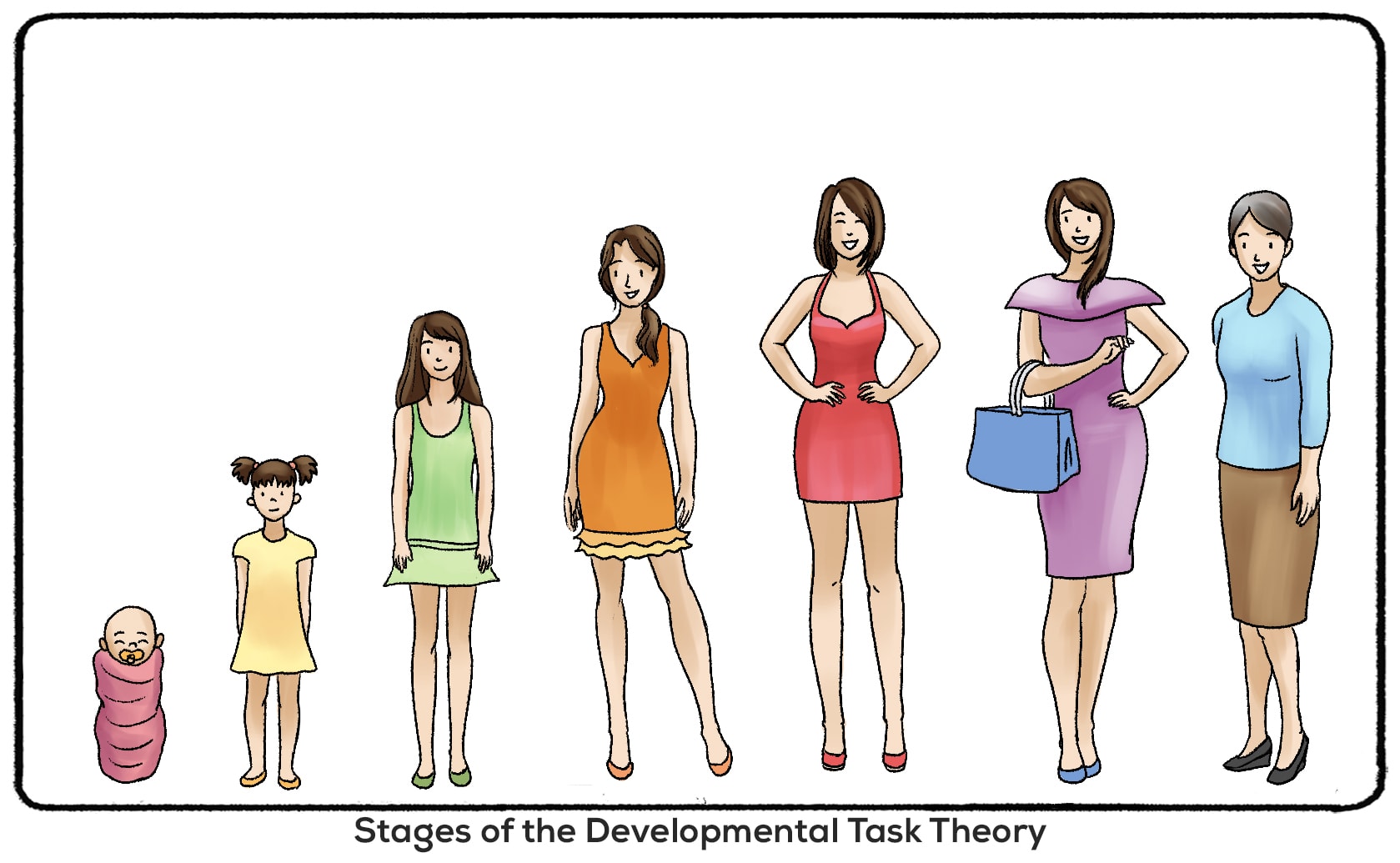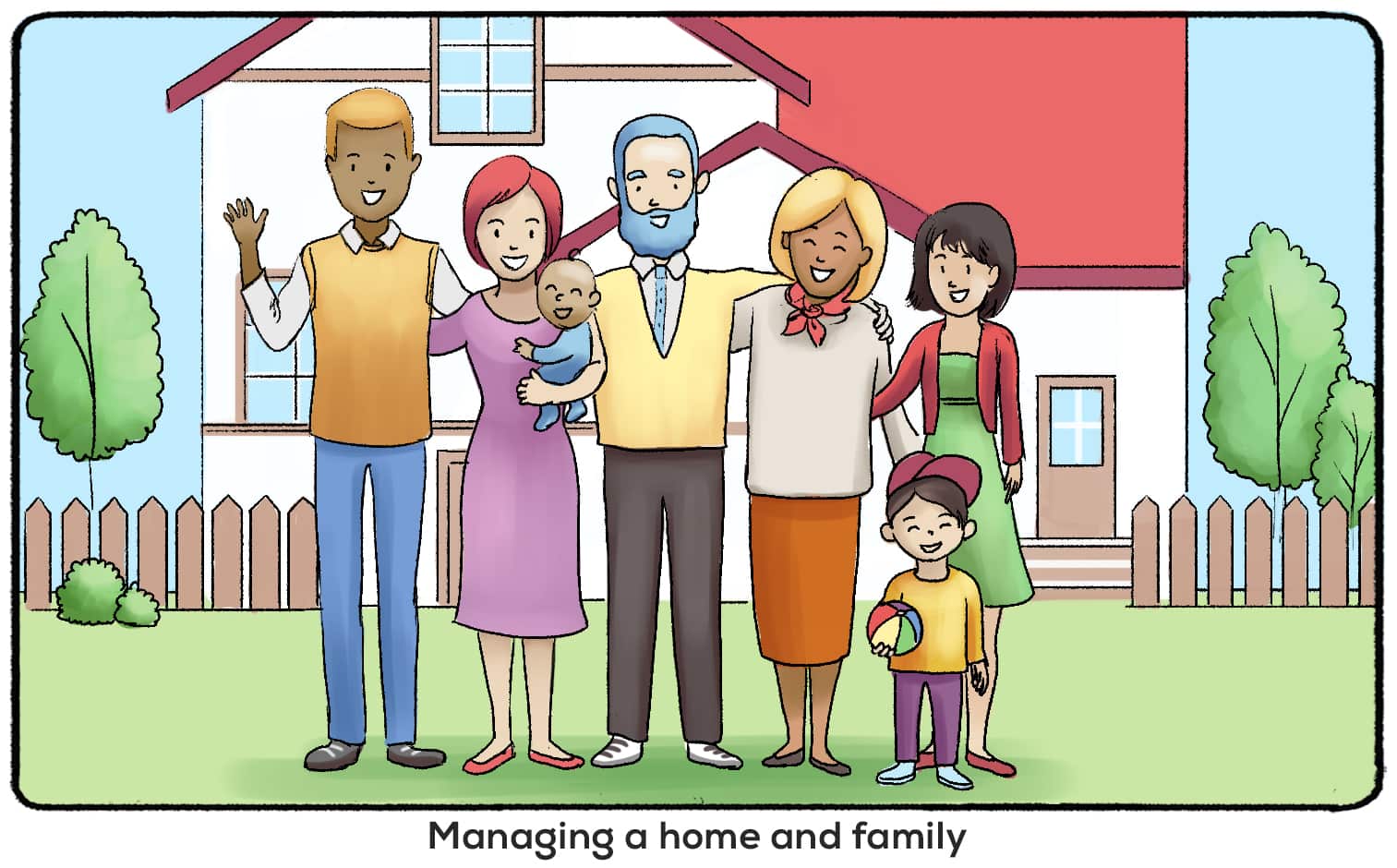What are the most important tasks in your life right now? I’m not talking about little things like brushing your teeth or paying a bill. I’m talking about the biggest goals in your overall development. According to the Havighurst's Developmental Task Theory, your age plays a big role in this answer.
Who Was Robert J. Havighurst?
Havighurst was an American psychologist who developed his theory on Developmental Tasks between 1948 and 1953. His work came after the work of Sigmund Freud and Jean Piaget, but before Erik Erikson. He is also known for popularizing the phrase “teachable moments” in his 1952 book Human Development and Education.
In his book, he writes:
“A developmental task is a task which is learned at a specific point and which makes achievement of succeeding tasks possible. When the timing is right, the ability to learn a particular task will be possible. This is referred to as a 'teachable moment.' It is important to keep in mind that unless the time is right, learning will not occur. Hence, it is important to repeat important points whenever possible so that when a student's teachable moment occurs, s/he can benefit from the knowledge."
What Is Developmental Task Theory?
Havighurst’s Theory defined developmental stages and tasks pertaining to each stage. This mirrors the work of Piaget and Erikson, who also identified "stages" of development and what each child achieved at different ages. Within each stage is a list of tasks that the individual feels that they must complete.
What Are the Stages in Havighurst's Developmental Task Theory?

The stages in Havighurst's Theory include:
- Infancy and early childhood (0-6 years old)
- Later childhood (6–13 years old)
- Adolescence (13–18 years old)
- Early Adulthood (19–30 years old)
- Middle Age (30–60 years old)
- Later maturity (60 years old and over)
If the child completes the "correct" tasks in the "correct" time frame, they will feel happy and accepted by society. Failing to complete these tasks will make the individual unhappy and out of place in society.
While societal rules and customs certainly influence the tasks within each stage of development, other factors are also at play here. Havighurst also defined a list of what influences the tasks an individual strives to complete at each stage of development:
Social Influences (Pressures of Society)
These are the rules of society and other cultural ideas that influence an individual’s developmental tasks. Havighurst lists “Achieving a masculine or feminine social role” multiple times as a developmental task. That is going to look different in every culture (and will look depending on the individual’s age.) In cultures where masculine and feminine roles are not strictly defined, it may not be considered a task at all. As time progresses and societies change their ideas of gender, these tasks may look different or become less important to complete.
Psychological Influences (Personal Values)
These tasks do not just come from external forces. An individual’s personality and interests will also influence the tasks required to develop successfully. Someone who is more motivated by money and riches may face different developmental tasks than someone who puts more value into personal relationships or dedicating themselves to a noble cause. Psychological influences may also lead an individual to prioritize some developmental tasks over others.
Biological Influences (Physical Maturation)
Biology is also at play here. Certain tasks are reserved for childhood or adulthood simply because the body can or cannot take on those tasks. On one end of a person’s life is infancy and early adulthood, where developmental tasks include “learning to walk.” On the other end is later maturity, where developmental tasks include “adjusting to decreasing physical strength and health.”
If someone is seriously injured or develops a debilitating condition later in life, their developmental tasks may change.
Examples of Developmental Tasks
All of these tasks are subject to change due to biological, psychological, and social influences. But Havighurst provided an example list of tasks that go with each stage of life. I’m just going to include a handful of tasks for each stage, although Havighurst listed many more in his work.
Developmental Tasks in the stage of Infancy and Early Childhood (0-6 years old) include:
- Learning to walk
- Learning to talk
- Toilet training
- Learning the foundations of reading
Developmental Tasks in the stage of Middle Childhood (6-12 years old) include :
- Learning physical skills necessary for ordinary games
- Learning to get along and play with children of the same age
- Achieving personal independence
- Recognizing what society deems as masculine or feminine social roles
Developmental Tasks in the stage of Adolescence (13-18 years old) include:
- Accepting one’s physical body as it goes through changes
- Preparing for partnership and family life
- Preparing for an economic career
- Acquiring a set of values and an ethical system as a guide to behavior; developing an ideology
Developmental Tasks in the stage of Early Adulthood (19-30 years old) include:
- Finding a partner (and learning to cohabitate with them)
- Achieving a preferred masculine or feminine social role
- Managing a home and starting a family
- Beginning a career
- Taking on civic responsibility

Developmental Tasks in the stage of Middle Age (31-60 years old) include:
- Achieving adult civic and social responsibility
- Assisting teenage children to become responsible and happy adults
- Developing adult leisure-time activities
- Accepting and adjusting to the physiologic changes or middle age
Developmental Tasks in the stage of Later Maturity (61-death) include:
- Adjusting to decreasing physical strength and health
- Adjusting to retirement
- Meeting social and civil obligations
Again, these tasks may look different for every individual. Civic and social responsibility, for example, may look different for every person, or may not be a priority at the age that Havighurst proposes. These tasks may serve as a guideline or a jumping-off point if you are thinking about your larger goals, but remember that they are influenced by different factors, including personal values.
Havighurst's Developmental Task Theory vs. Piaget's Stages of Cognitive Development
One of the biggest differences between Havighurst’s Developmental Task Model and Piaget’s Stages of Cognitive Development is the length at which these theories cover. Havighurst’s theory covers the life of the person and Piaget’s theory covers infancy through the age of 12.
Another difference is that Havighurst’s developmental tasks vary so widely based on societal and internal pressures. Various tasks when it comes to making friends, learning to read at the appropriate time, or feeling the pressure to adapt to society’s masculine and feminine roles may all be considered developmental tasks under Havighurst.
But Piaget’s theory is more universal. He looks at skills that largely do not include interactions with others (although the child’s grasp of abstract concepts like empathy affects their relationships.) Conservation, object permanence, and problem-solving are all important cognitive developments no matter what society or the individual dictates.
Jean Piaget's stages of development focus on cognitive development and reaching a child's full potential of intelligence. These stages align with Havighurst’s only if society and individuals prioritize intelligence from an early age.
Comparing Havighurst vs. Piaget (Examples)
One of the example tasks used in Havighurst’s Middle Childhood stage (ages 6-12) is “learning to get along and play with children of the same age.” When speaking in broad terms of application, this is identical to cognitive developments achieved within Jean Piaget’s Concrete Operational Stage (ages 6-12.) But Piaget’s theory breaks down certain skills and abilities that allow a child to get along with children of their own age. Empathy is developed during this stage. With empathy, children are more likely to include each other, anticipate the child’s needs, and create a positive environment and relationship.
Also during the Middle Childhood stage is the example task of “recognizing what society deems as masculine or feminine social roles.” Whether a child is born male or female does not impact how they will develop under Piaget’s theory. Later research based on his theory also fails to see a difference in the development of skills like conservation. Recognizing what society has deemed as “masculine” and “feminine” tasks, however, does start around this age, at least in American society. This task may not be as relevant to children who grow up in a country like Sweden, where those roles are not as important.
Erikson’s Stages of Psychosocial Development contain eight stages, compared to Havighurst’s six. Erikson’s theory speaks to the feelings a person has about themselves and their place in the world, rather than their ability to complete tasks dictated by societal norms. Both last for the entire length of a person’s life.
Remember, Havighurst created his developmental stages before Erikson. The two theories have a few things in common, but the “achievements” of each stage of life are different.
Erikson's stages of development focus on how people face certain crises. These crises are at the core of every person’s development: identity vs. confusion, intimacy vs. isolation, etc. Going through these crises, a person learns how to interact with themselves and the world around them.
Comparing Havighurst vs. Erikson (Examples)
Resolving these crises looks different than simply completing a task or checking items off their “bucket list”. Take, for example, the crisis of autonomy vs. shame. This stage takes place when a child is between the ages of 18 months and three years. During this point, the child is moving through the “Infancy and Early Childhood” stage of Havighurst’s Developmental Task Theory, which lasts from birth to six years old.
Erikson suggested that during this stage, a child aims to develop personal autonomy. They do this when they are confident in making decisions for themselves about their needs. This could look like going to the toilet on their own, a task that is outlined in Havighurst’s Developmental Task Theory. Or, it could look like choosing what they wear during the day.
Another example is Erikson’s intimacy vs. isolation, which takes place around the ages of 20 and 40. During these years, an adult is experiencing what Havighurst identifies as the Early Adulthood and Middle Age stages. The intimacy vs. isolation stage is all about the journey to finding love, intimacy, and close relationships (romantic or otherwise). Does this mean getting married? Co-habitating with a partner? Making the choice between love and career? When it comes to Havighurst’s Developmental Task Theory, the answer all depends on the pressures of society and personal values. To Erikson, this stage is simply about finding intimacy and avoiding isolation. Whether this is resolved successfully also depends on whether the person feels comfortable in their own identity.
Havighurst's Developmental Task Theory vs. Freud's Stages of Psychosexual Development
Similar to Havighurst vs. Piaget, Freud’s stages of psychosexual development primarily focus on childhood, although the “genital stage” in Freud’s theory lasts from puberty until death. Like Piaget, the challenges and resolutions in Freud’s theory are universal…although there are fundamental differences that male and female children face.
Comparing Havighurst vs. Freud (Examples)
Like Havighurst (and arguably, Erikson), toilet training is a fundamental achievement in Freud’s theory. Freud’s anal stage takes place between the years of 1 and 3. What matters in Freud’s theory is not so much that toilet training is achieved, but how the relationship between parents and child changes during this stage. Traumatic memories during the toilet training process may lead some children to having an anal-retentive personality that lasts into adulthood.
All of these theories of child development look are slightly different, but still have similarities and suggest similar methods for helping a child grow. Which theories had you heard of before reading this blog post? Which stand out to you? Let us know!
